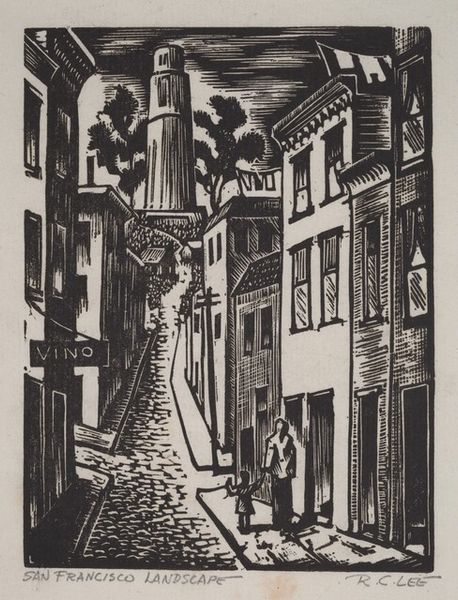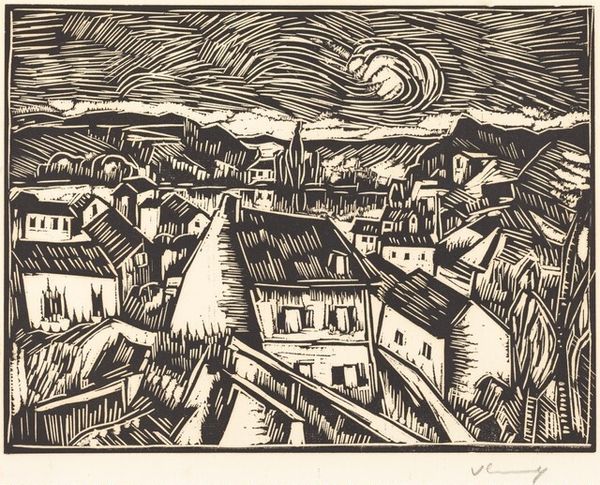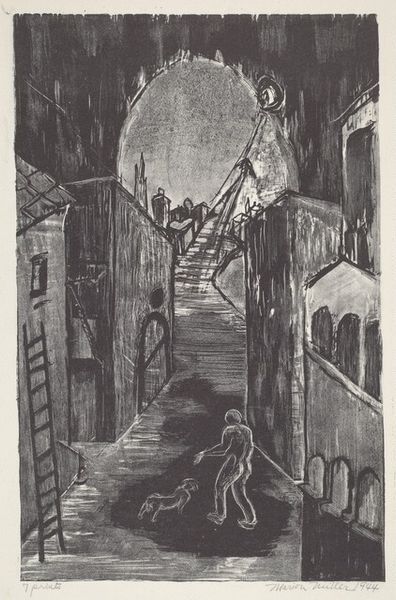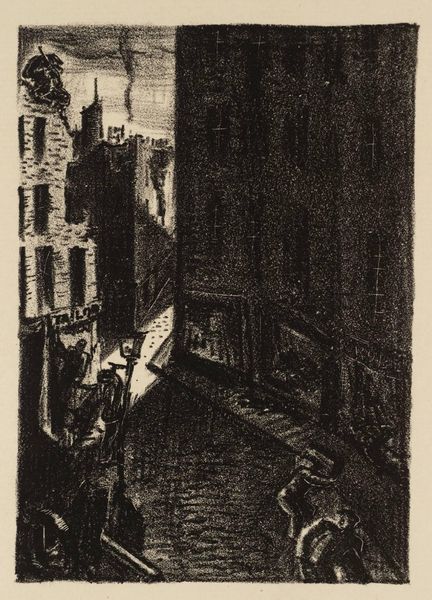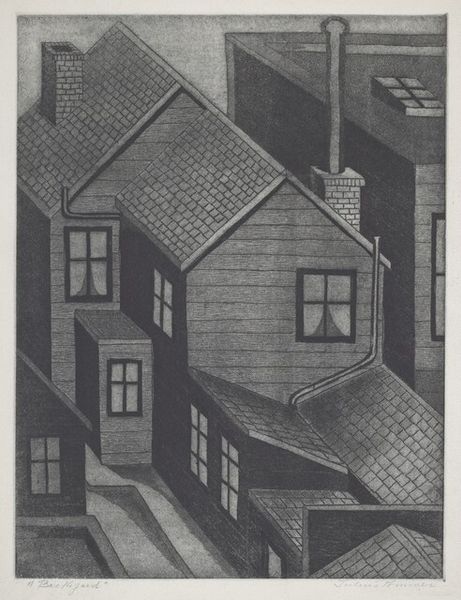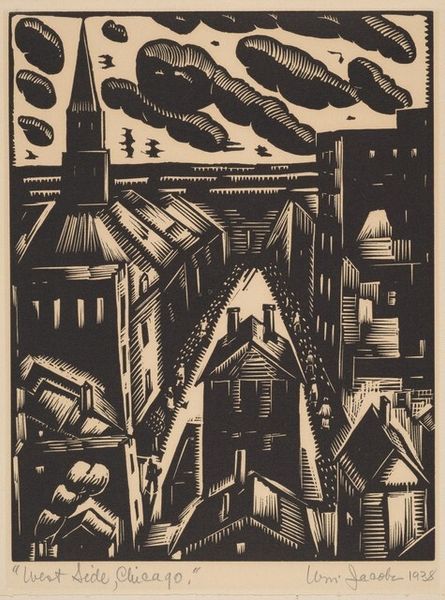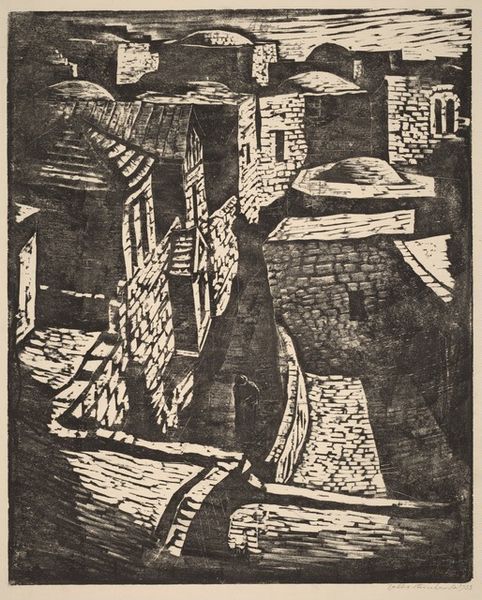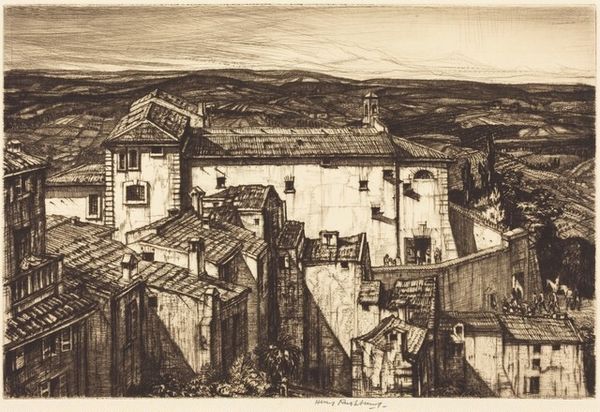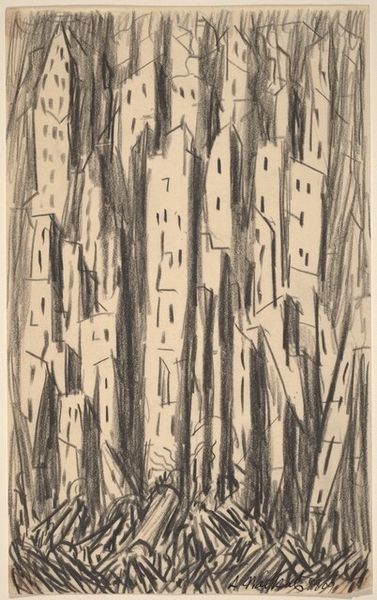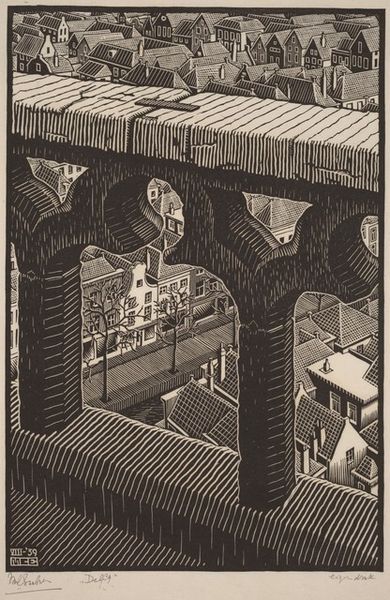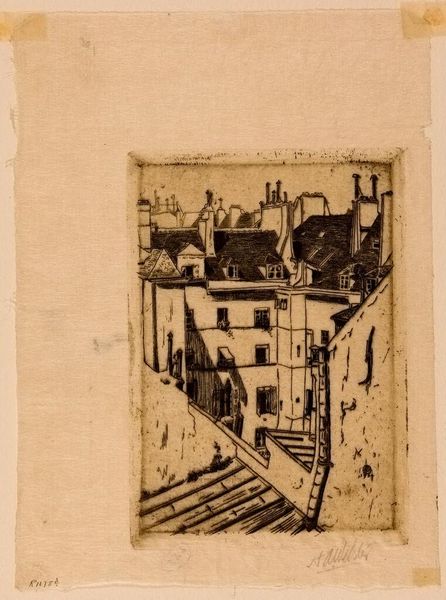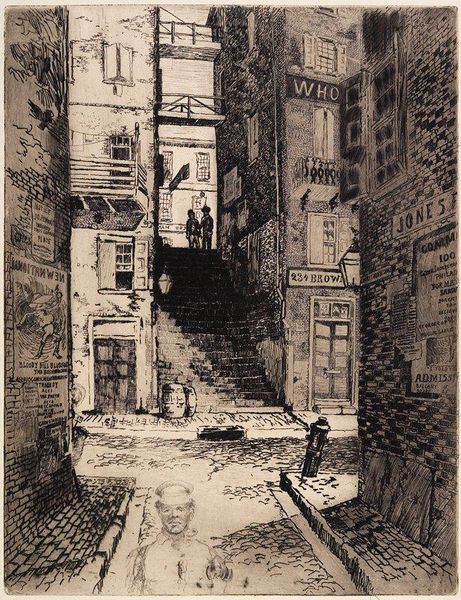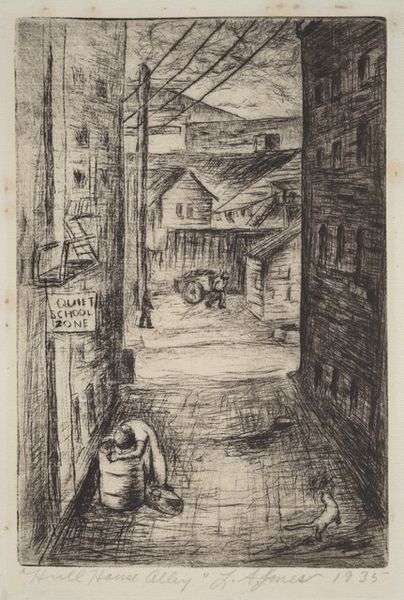
print, woodcut
#
pen drawing
# print
#
landscape
#
geometric
#
woodcut
#
limited contrast and shading
#
pen work
#
cityscape
#
italian-renaissance
Dimensions: image: 32 x 21.6 cm (12 5/8 x 8 1/2 in.)
Copyright: National Gallery of Art: CC0 1.0
Curator: This is M.C. Escher's "Siena," a woodcut print from 1922. What are your initial impressions? Editor: Stark. Claustrophobic, almost. The high vantage point overlooking that narrow street... It feels like a surveillance image, imposing and detached. Curator: Absolutely, the technique amplifies that effect. Notice the way Escher used the woodcut process to achieve those precise, repetitive lines. The contrast between the light sky and the densely shaded buildings creates a palpable sense of weight and pressure. This wasn't just observed; it was meticulously crafted, leveraging the specific affordances of the print medium. Editor: The social architecture is fascinating too. How does this seemingly quiet scene speak to issues of access and control in the Renaissance, the period in which the building in the background dates? Curator: It is fascinating that even though he is known later for his fantastical scenes and mathematical concepts, his early works such as these feature elements from observed reality, particularly architecture. In "Siena" we see careful renderings that are deeply rooted in the architectural practices and use of space in a real urban landscape. These spaces dictated the living conditions and the patterns of human interactions within the community that occupied it. Editor: The city narrows into what feels like a funnel that pulls and guides those walking inside it to the bell tower, a potential power structure to the community. Do we get to look at the working conditions of the woodcut workshops that produced these during this period and how does their role affect the way in which we understand the space? Curator: That's an important layer of analysis. And of course, beyond the socioeconomic structures within the depicted city, there are questions concerning gender too. Are there signifiers present in how Escher composes the buildings, the positioning of the street, that reflects this, considering the role of women? Editor: Interesting questions! And it makes me think how looking at the distribution networks for prints and understanding the economics will deepen our comprehension and experience of "Siena." Curator: Precisely. From the artist's technique to the urban power dynamics it implies, every aspect contributes to a complex tapestry of meanings. Editor: Agreed. Seeing past just surface appearance allows to interrogate the processes through which a static, limited perspective is offered as representative of the conditions for living, constructing a built, inhabited, environment.
Comments
No comments
Be the first to comment and join the conversation on the ultimate creative platform.
